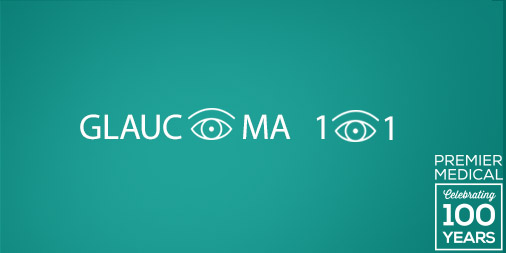Glaucoma 101

As the second leading cause of blindness, glaucoma is a common eye disease that is often difficult to detect and slow to develop. It is important to have regular eye exams to maintain the health of your eyes.
- What is glaucoma and what causes it?

Glaucoma is a slow process of fluid building up behind the eye. This increases eye pressure, damaging optic nerve fibers, leading to reduced vision or blindness in extreme cases.
- Warning signs?

It can be difficult for patients to detect vision loss because the eye naturally adapts to fill in their missing vision. Common symptoms of glaucoma can include: gradual loss of peripheral vision, eye pain, nausea and vomiting, sudden onset of visual disturbance, blurred vision, halos around lights, and reddening of the eye.
- How to treat it

The most common form of treatment is eye drops that can help reduce the pressure that has accumulated behind your eyes. Surgery is also an option. This can range from a common extraocular laser procedure (similar to LASIK) or to a more complicated intraocular surgery.
- How to prevent it

There are no sure ways to prevent glaucoma. However, a healthy diet and proper vision care can help maintain your healthy eyes. Optometrists recommend an eye exam every 5 to 10 years.
It is important to receive regular eye exams and maintain a healthy diet to reduce your chances of developing glaucoma, or catching it early. If you are experiencing a loss of vision, click here to scheduled your appointment with a Premier Medical Group Optometrist today.
